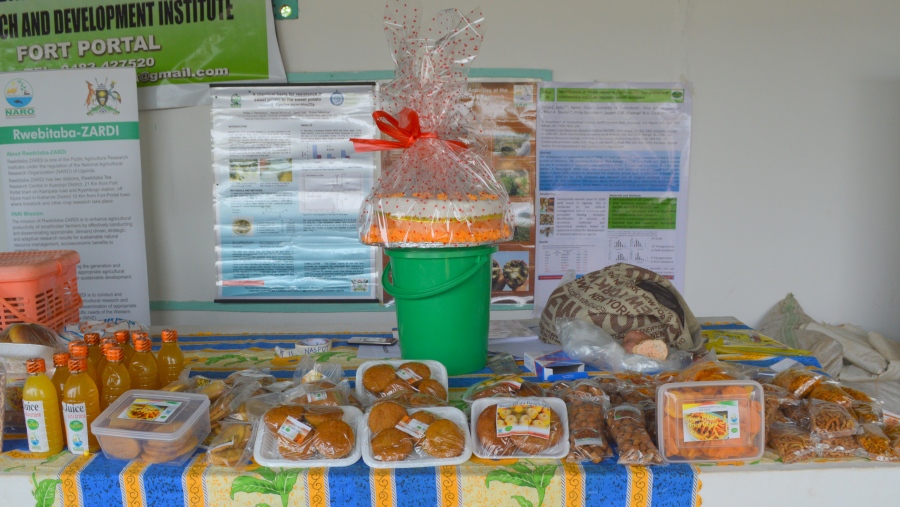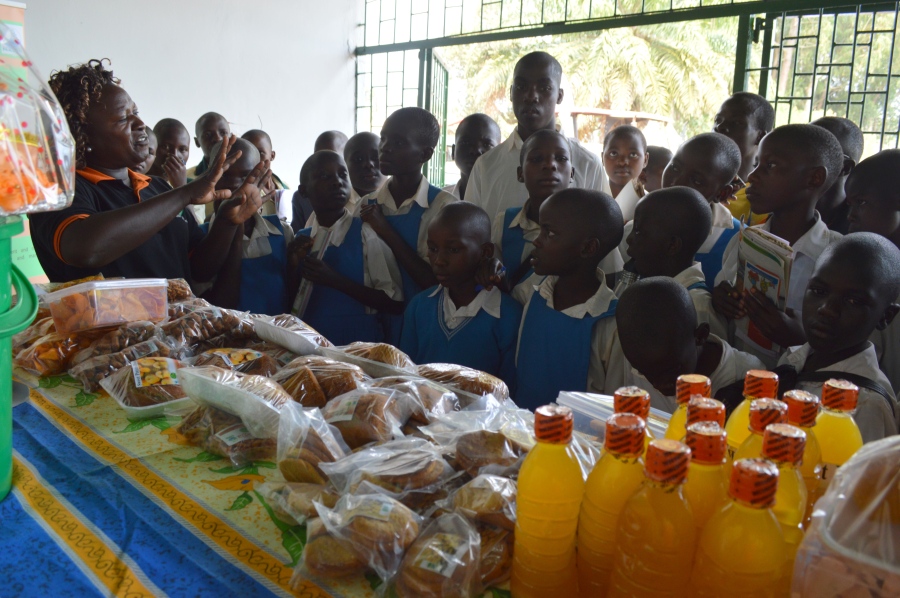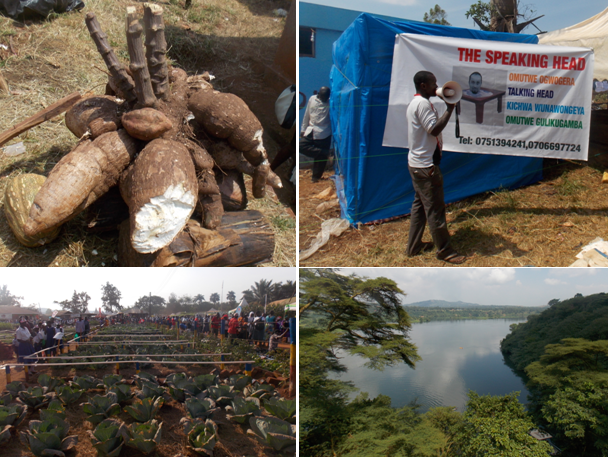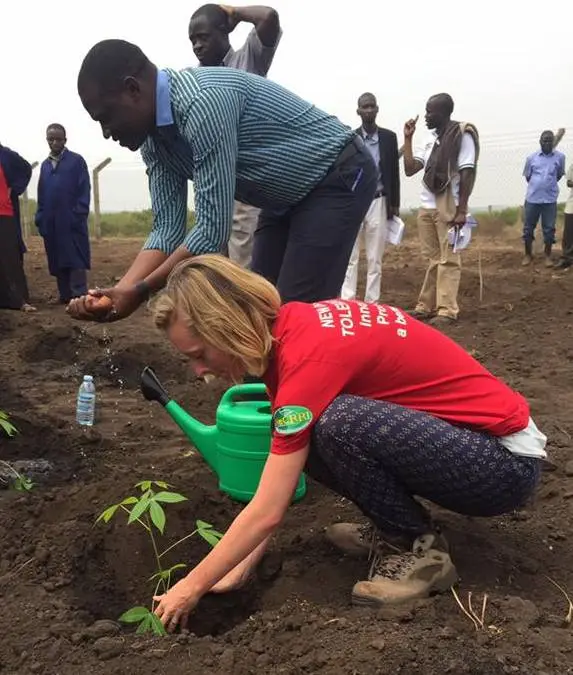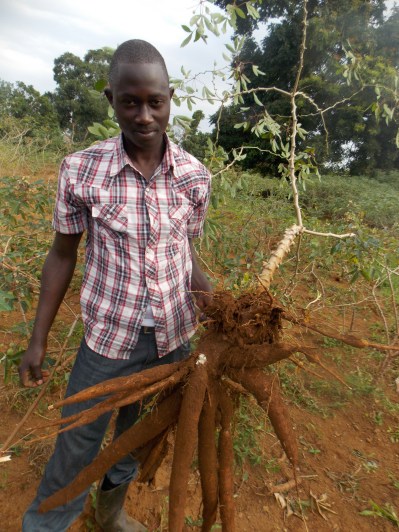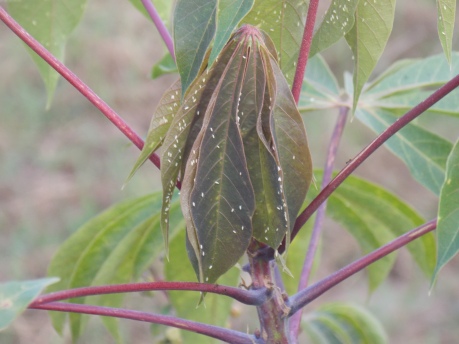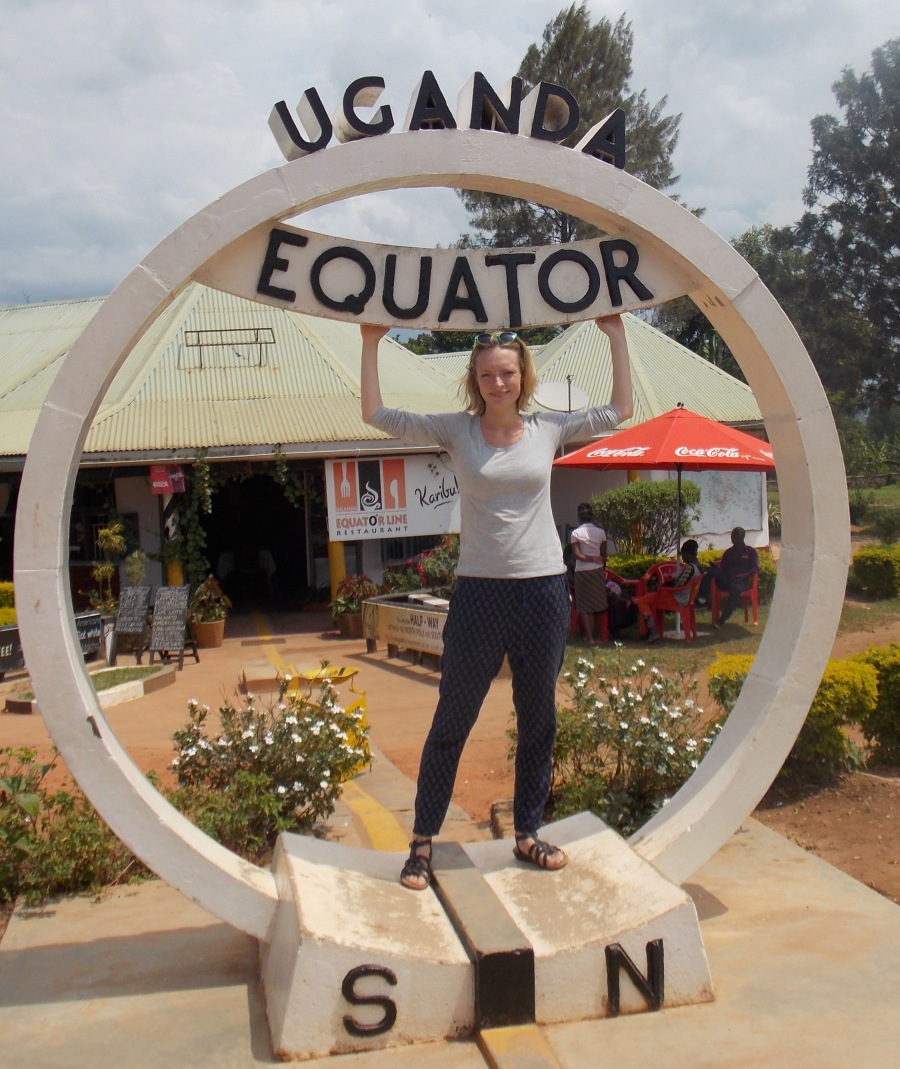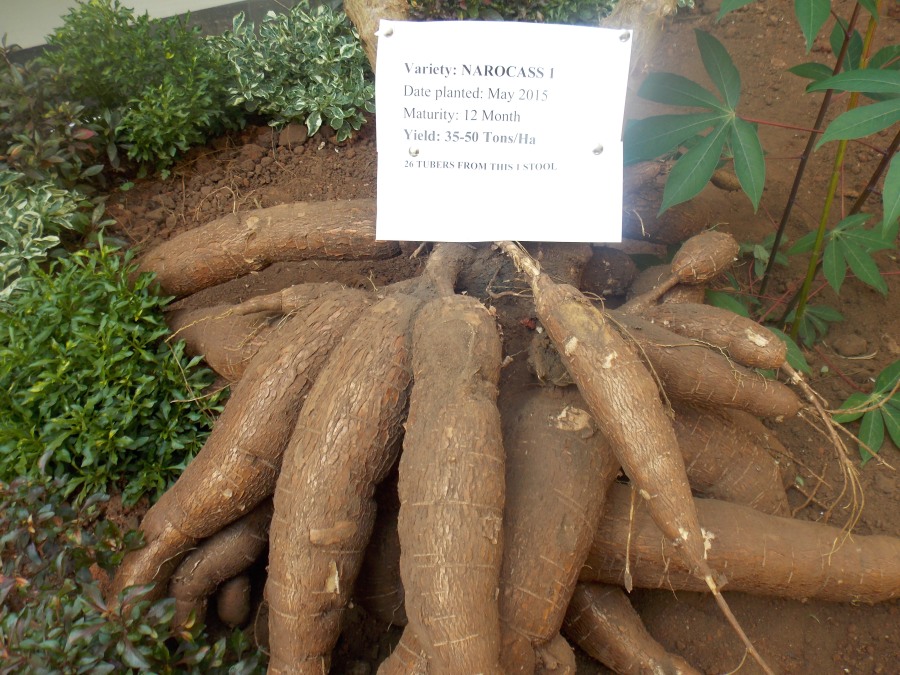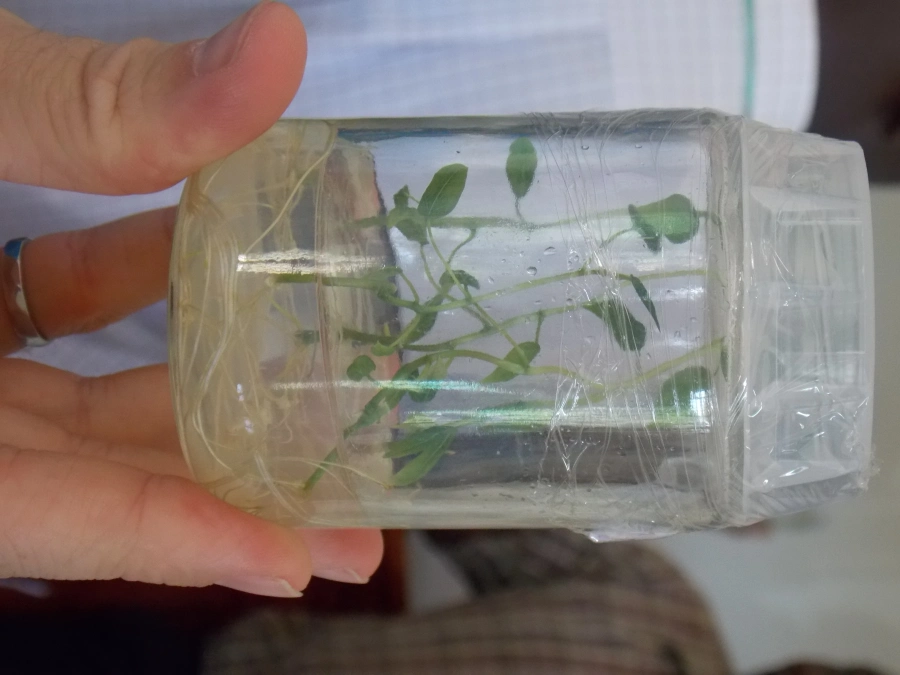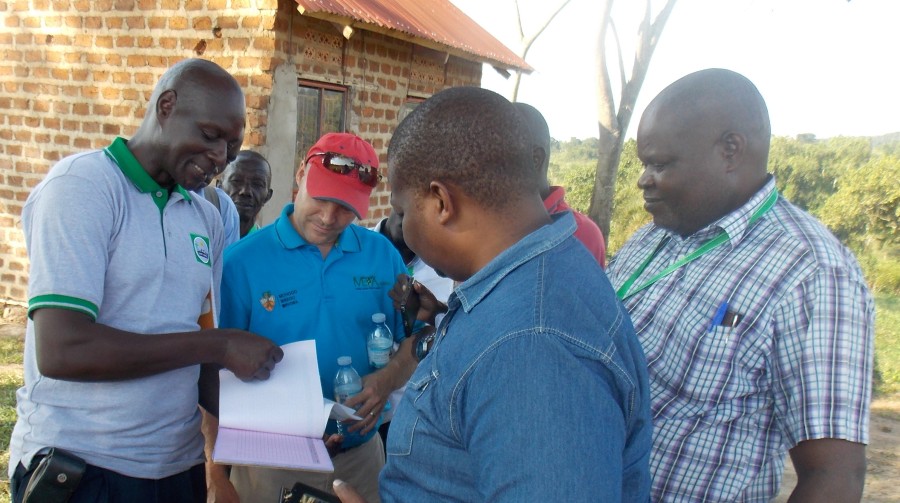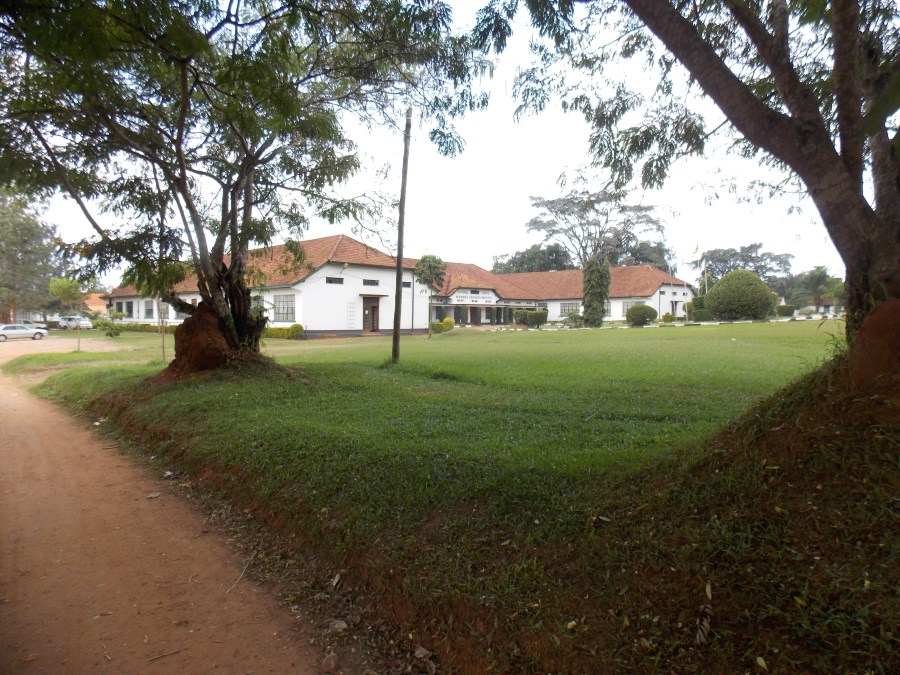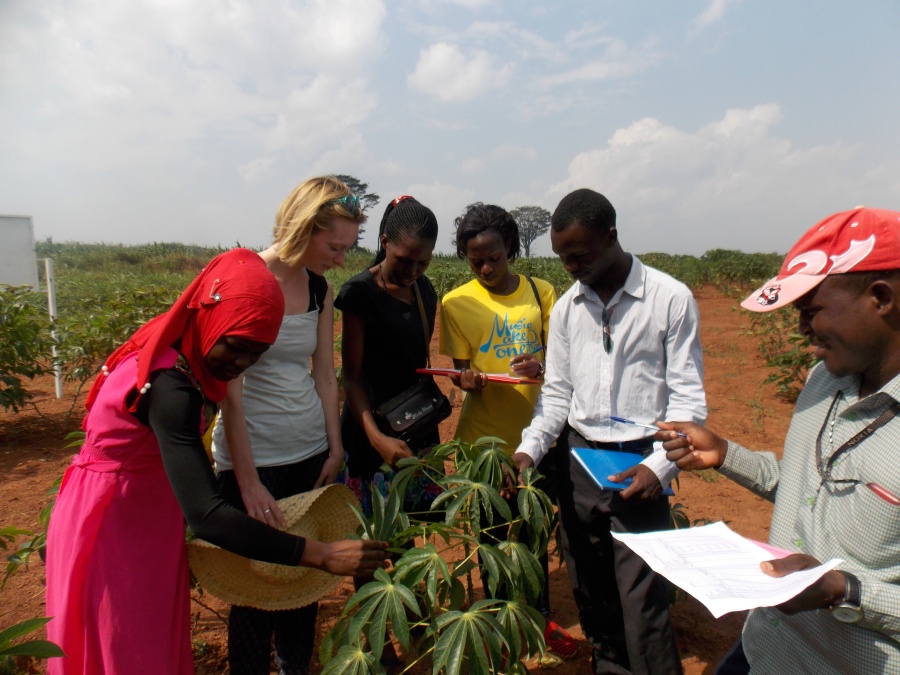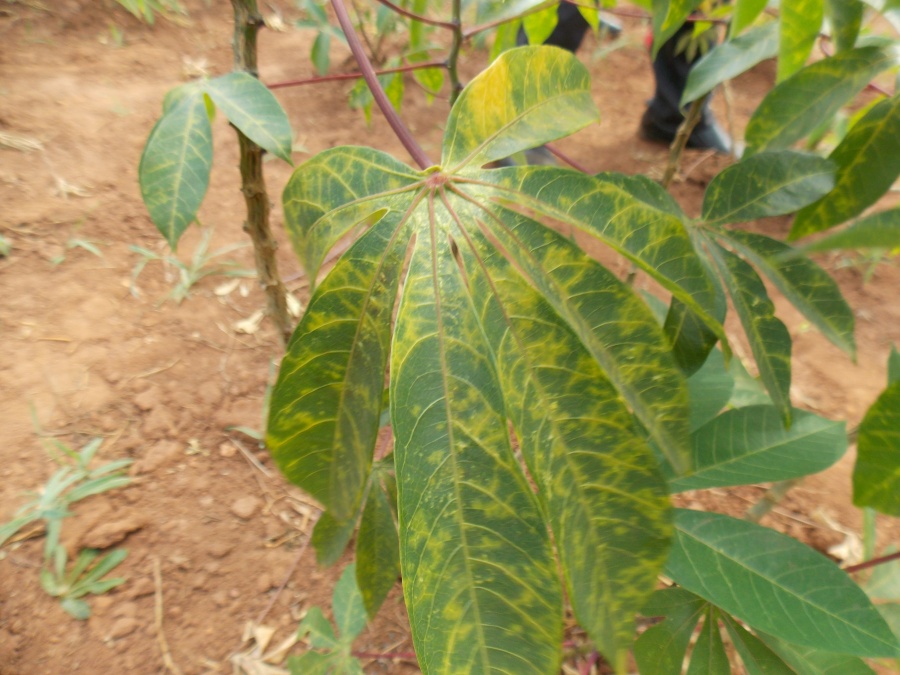Last week I helped to harvest and score cassava tubers a breeding trial at the National Crops Resources Research Institute (NaCRRI). The trial is part of the NEXTGEN Cassava project which applies genetic techniques to conventional breeding and aims to produce new varieties with Cassava brown streak disease (CBSD) and Cassava mosaic disease (CMD) resistance.
Why cassava and what’s the CBSD problem?
Approximately 300 million people rely on cassava as a staple food crop in Africa. It is resilient to seasonal drought, can be grown on poor soils and harvested when needed. However cassava production is seriously threatened by CBSD, which can reduce the quality of tubers by 100% and is currently threatening the food security of millions of people.
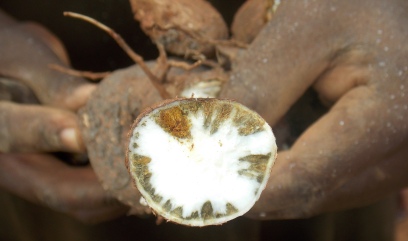 |
| Cassava brown streak symptoms on tubers |
Crossing cassava from around the world
Cassava varieties show a huge variation in traits including disease resistance. The NEXTGEN Cassava project has crossed 100 parent plants from Latin America with high quality African plants to produce new improved varieties, with higher levels of CBSD and CMD resistance. Crossing involves rubbing the pollen from one parent variety on to the female flower part (pistil) of the second parent variety to produce seeds.
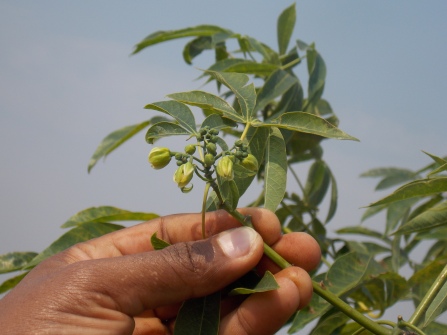 |
| Cassava flowers used to cross different varieties |
Cutting back on time
The process is not easy. The complex heritability of traits in cassava means that many plants have to be screened to identify plants with the best traits. To cut down on this time, researchers from Cornell University sequenced the DNA from 2,100 seedlings and selected plants containing sequences linked to desirable traits.
Screening for resistance
These plants were transferred to field site in Namulonge, where there is a high level of CBSD, making it easier to spot resistant plants. After 12 months the tubers were dug up and cut into sections. Each root was scored for the severity of CBSD. Plants which show no disease symptoms have now been selected for the next stage of breeding. Eventually varieties will be tested for their performance at sites across Uganda and given to farmers for their feedback.
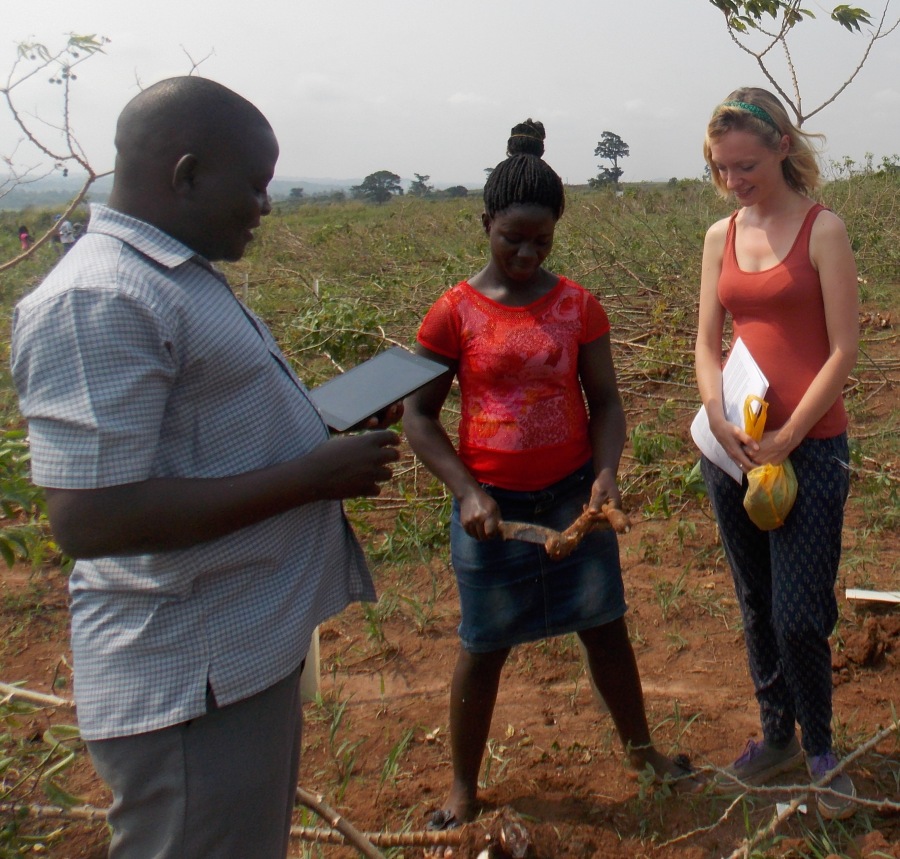 |
| We harvested and scored tubers for Cassava brown streak symptoms. I then tagged disease free plants for selection! |
Time to harvest!
 |
| Alfred Ozimati is managing the breeding programme |
I helped to score and tag plants, it was hard work! I was impressed by the stamina of the workers who harvested from 8 am until 3 pm without a rest. I was struck by the mammoth task of breeding cassava for so many traits and by the programme manager Alfred Ozimati’s determination to get the work done as quickly as possible. Alfred is currently a PhD student at Cornell University; he kindly offered to answer these questions:
What are the challenges of conventional breeding and how does sequencing help to address these?
Typical conventional breeding cycle of cassava is 8-10 years before parents are selected for crossing. The sequencing information allows a breeder to select parents early at the seedling stage, allowing more crossing cycles over time than conventional cassava breeding. With sequencing, the process of releasing varieties with improved CBSD and CMD resistance should take about 5 years.
What are your long term hopes for the project and the future of cassava breeding?
We hope to use genomic selection routinely, to address any other challenges cassava as a crop of second importance to Uganda will face. And also to take the technology to other East African, cassava breeding programs to faster address their major breeding constraints.
 |
| Katie Tomlinson |
More from this blog series:
Blog 3: Learning the ropes
Blog 4: Clean cassava to solve brown streak problem?
Blog 5: Taking a trip to the cassava field!
Blog 6: Using GM to fight cassava brown streak disease



